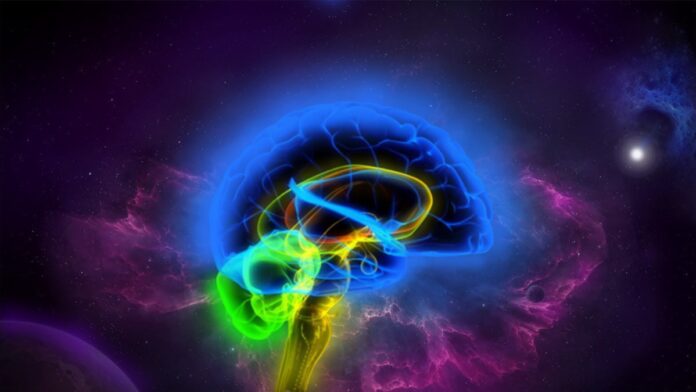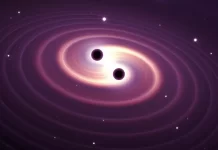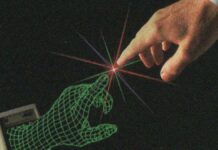Completely formed brain that emerges from uncommon random fluctuations out of thermodynamic equilibrium, complete with memories of fully human life in our Universe. It’s a physics thought experiment, and the reasoning argues that a single brain forming spontaneously and momentarily in a void means complete with a memory of having existed in our world, is more likely than the cosmos arising from a random fluctuation in a universe in thermal equilibrium. A theoretical prediction of Boltzmann’s explanation about the thermodynamic arrow of time, learn more.
Contents
What are Boltzmann Brains?
Boltzmann brains are completely formed brains that emerge from uncommon random fluctuations out of thermodynamic equilibrium, with memories of fully human life in our Universe. Theoretically, atoms in a void may spontaneously come together in such a way as to create a working human brain over an extraordinarily long but not endless period. It would almost instantly stop operating and begin degenerating, like any other brain in such a hostile environment (the hostile vacuum of space with no blood supply or body).
It’s a physics thought experiment, and the reasoning argues that a single brain forming spontaneously and momentarily in a void (complete with a memory of having existed in our world) is more likely than the cosmos arising from a random fluctuation in a universe in thermal equilibrium.
Boltzmann brains are a theoretical prediction of Boltzmann’s thermodynamic arrow of time explaining. Though Ludwig Boltzmann never mentioned it, cosmologists used his concepts about random fluctuations to better understand the cosmos.
History of Boltzmann Brains
The concept is named after Austrian scientist Ludwig Boltzmann, who proposed a theory in 1896 that attempted to explain why humans live in a cosmos that is not as chaotic as the nascent study of thermodynamics predicted. He offered several ideas, one of which was that the cosmos, even if entirely random (or at thermal equilibrium), will naturally move to a more ordered (or low-entropy) state. It was offered as a reductio ad absurdum reaction to Boltzmann’s early explanation for our Universe’s low-entropy state.
In 1896, a mathematician, Ernst Zermelo, proposed that the second law of thermodynamics was absolute rather than statistical. The Poincaré recurrence theorem implies that statistical entropy in a closed system must eventually be a periodic function; thus, according to Zermelo, the Second Law, which is constantly observed to increase entropy, is unlikely to be statistical. Ludwig Boltzmann proposed two hypotheses to rebut Zermelo’s thesis. The first theory, which is now thought to be valid, is that the Universe began in a low-entropy condition for some unexplained reason.
The “Boltzmann universe” scenario, published in 1896 but attributed to Boltzmann’s assistant Ignaz Schütz in 1895, is the second and alternative theory. In this scenario, the Cosmos spends the great majority of eternity in a featureless state of heat death; nevertheless, after enough eons, an extremely rare thermal fluctuation occurs in which atoms bounce off each other in precisely the same way as our entire observable Universe. While much of the Universe is featureless, Boltzmann claims that people do not notice those areas because they are devoid of intelligent life; to Boltzmann, it is unremarkable that humanity only sees the interior of the Boltzmann Universe because that is the only place where intelligent life exists.
In 1931 Arthur Eddington pointed out that because a significant fluctuation is exponentially less likely than a tiny fluctuation, astronomers that observers will disproportionately outnumber viewers in Boltzmann worlds in more minor changes; physicist Richard Feynman also made a similar counter-argument. By 2004, physicists had taken Eddington’s discovery to its logical conclusion. In an eternity of thermal fluctuations, the most abundant observers would be tiny “Boltzmann brains” appearing in an otherwise featureless universe.
Around 2002, several cosmologists became concerned that human brains in the current Universe appear far less likely than Boltzmann brains will be in the future, leading to the conclusion that humans are statistically more likely to be Boltzmann brains. A reductio ad absurdum argument is occasionally used to refute some cosmological hypotheses. Boltzmann brain arguments are part of cosmology’s unsolved measure problem when applied to more recent theories about the multiverse. Boltzmann’s brain thought experiment is used in physics to evaluate rival scientific theories because it is an experimental science.
Unexpected Formation of Boltzmann Brains
In the Universe’s eventual condition of ergodic “heat death,” every possible structure (including every likely brain) forms through random fluctuation given enough time; the Poincaré recurrence time is used as a timeline for this. Boltzmann-style thought experiments focus on structures that are presumably self-aware observers, such as human brains.
Smaller structures that barely meet the criteria are vastly and exponentially more common than larger structures, given any arbitrary standards for what constitutes a Boltzmann brain (or planet, or Universe); a rough analogy is how the odds of an exact English word appearing when shaking a box of Scrabble letters are more significant than the odds of a whole English sentence or paragraph forming. Moreover, the typical timescale for developing a Boltzmann brain is much longer than the Universe’s present age.
Thus Boltzmann brains can be produced by either quantum fluctuation or a thermal fluctuation involving nucleation in current physics, explained below.
Boltzmann Brains from a quantum fluctuation
After billions of years of time delay, a Boltzmann brain would appear as a quantum fluctuation in the vacuum, according to one calculation. Even in a complete Minkowski vacuum, this variation can occur (a flat spacetime vacuum lacking vacuum energy). More minor fluctuations that “borrow” the least amount of energy from the void are greatly favored by quantum physics. A quantum Boltzmann brain would typically emerge from the vacuum (together with an equal quantity of virtual antimatter), exist for only long enough to have a single coherent thought or observation, and then vanish as quickly as it appeared. This type of brain is self-contained and cannot radiate energy indefinitely.
Boltzmann Brains from nucleation of non-virtual particles
According to current evidence, the vacuum that pervades the observable Universe is a de Sitter space with a positive cosmological constant, not a Minkowski space. A Boltzmann brain can grow in a de Sitter vacuum (but not in a Minkowski vacuum) by nucleating non-virtual particles gradually constructed by chance from Hawking radiation released from the de Sitter space’s constrained cosmic horizon.
After it completes its activity, a typical nucleated Boltzmann brain will cool to absolute zero and eventually decay like any other object in space. Unlike the quantum fluctuation situation, the Boltzmann brain will radiate energy indefinitely. Given whatever artificial criteria are established for naming a fluctuation a “Boltzmann brain,” the most common volatility in nucleation is as close to thermal equilibrium overall as possible. A Boltzmann brain can theoretically form at any point throughout the matter-dominated early Cosmos, albeit with a small likelihood.
Are you a Boltzmann observer?
The ratio of Boltzmann brains to “normal observers” in Boltzmann brain scenarios is astronomically enormous. Moreover, almost any relevant subset of Boltzmann brains outnumber “normal observers,” including “brains embedded within functioning bodies,” “observers who believe they are perceiving 3 K microwave background radiation through telescopes,” “observers who have a memory of coherent experiences,” and “observers who have the same series of experiences.”
As a result, in the event where Boltzmann brains rule the Universe, it is questionable whether one can accurately conclude that one is not such a “Boltzmann observer” under most conceptions of consciousness. Boltzmann observers living in a continuous Earth-sized fluctuation over several years exceed the “normal observers” produced before a Universe’s “heat death” even under “content externalism” models of awareness.
As previously stated, most Boltzmann brains have “abnormal” experiences; nevertheless, if one knows oneself to be a typical Boltzmann brain, “normal” observations are unlikely to continue. In other words, most Boltzmann brains have “abnormal” experiences in a Boltzmann-dominated Universe. Still, most observers with only “regular” backgrounds are Boltzmann brains due to the overwhelming vastness of the Boltzmann brain population in such a Universe.
Boltzmann Brain Problems
Descartes had no plausible science to underpin how a deceptive demon could construct all of his experiences when he imagined a deceiving demon. Has anything changed since then? Is there now a scientifically viable technique to create a Cartesian deceiving demon, even though it is self-defeating? Again, we don’t have to believe in the Boltzmann brain argument’s validity. Below are the explanations that science itself necessitates so many speculative stages that it’s impossible to erase them, and there’s another flaw in the reasoning.
Infinite Inflation
Different approaches to the measure problem in cosmology are used in one class of Boltzmann brain solutions. In infinite multiverse theories, the ratio of regular observers to Boltzmann brains varies on how endless bounds are taken. Measures could be chosen to avoid a significant number of Boltzmann brains.
Unlike the single-universe case, finding a global solution in eternal inflation requires summing all possible string landscapes; in some cases, even a tiny fraction of universes permeated with Boltzmann brains cause the multiverse’s overall measure to be dominated by Boltzmann brains.
In cosmology, the measurement problem also involves the ratio of normal observers to abnormally early observers. The typical observer in measures with an extreme “youngness” problem, such as the appropriate time measure, is a “Boltzmann baby” created by rare fluctuation in a very hot, early cosmos.
In possibilities involving a single universe
The number of “normal” observers in a single de Sitter Universe with a cosmological constant, starting from any finite spatial slice, is limited and bounded by the Universe’s heat death. In most models, the number of nucleated Boltzmann brains is unlimited if the Universe lasts forever; cosmologists like Alan Guth worry that this will make it appear “infinitely implausible for humans to be normal brains.”
Infinite Boltzmann nucleation is avoided if the Universe is a false vacuum that locally decays into a Minkowski or a Big Crunch-bound anti-de Sitter space in less than 20 billion years. (Even if the average local false vacuum decay rate is more than 20 billion years, Boltzmann brain nucleation remains unlimited since the Universe expands faster than local vacuum collapses destroy the areas of the Universe within the collapses’ future light cones.) Superheavy gravitinos to a heavier-than-observed top quark triggering “death by Higgs” are among the proposed theoretical methods to end the cosmos within that timescale.
Infinite Boltzmann nucleation is also prevented if there is no cosmological constant and the currently observed vacuum energy originates from a quintessence that will ultimately evaporate.
Cartesian Deceiving Demons
Cartesian Deceiving Demons is a fascinating proposal, but the problem is if this proposal is correct, then all we think we know is a figment of our imagination. Dinosaurs’ hidden history is merely a fictitious planetary memory preserved in fossils formed by fluctuations. The entire story of the Universe arising from a great big bang, whose trash compressed to produce stars and the earth on which we stand, is also fictitious.
It isn’t simply about the past. In the Boltzmann brain scenario, you were most likely created at this moment by fluctuation. So, like every other memory, you remember reading the text before this one is made.
Because all that is required is for your fooled brain to exist for a brief moment, the proposal only necessitates the presence of one brain. However, suppose extreme solipsism is too much to bear. In that case, the same reasoning may be used to prove that fluctuations can construct a significant section of the Universe, complete with numerous sentient brains all agreeing on a fabricated past. (As we’ll read below, one of the more rigorous justifications for the Boltzmann brain model is that this more significant component of the Universe appears via fluctuations.)
According to Wayne Myrvold, Boltzmann’s brain tale, like the original Cartesian misleading demon, demands us to believe that all of our previous experiences are illusory. For example, humankind believes that scientists’ collective experience provides strong evidence that we came from an outstanding big bang billions of years ago. Instead, we’re supposed to think that we live in a world at thermal equilibrium that, after an unimaginably long length of time, manages to spit forth a brain that looks precisely like ours as a highly unlikely thermal fluctuation, complete with false memories of a lower entropy past.
This criterion is self-defeating. It also casts doubt on our entire understanding of thermal physics. All of science’s experimental data is a created recollection. We could even be duped into embracing the logic of all the reasoning that links these mock tests to the significant scientific outcome. We have no reason to believe the statistical physics that would yield Boltzmann brains in the first place in this skeptical scenario.
Is Physics Working?
According to Boltzmann’s original argument, a thermal system in equilibrium will eventually vary away from balance, and huge fluctuations are feasible but with a very low likelihood. For his purposes, that was sufficient. He only needed low entropy states occurring as fluctuations, along with higher entropy pasts and futures, to illustrate the compatibility of ordinary thermodynamics and time-reversible physics.
The extra step goes beyond thermal equilibrium fluctuations to produce a low entropy state. The low entropy state must be the same as where we are currently. It could be the brief existence of a brain similar to ours. It might even be a larger slice of the cosmos that looks exactly like ours, complete with sentient observers who are brain-embodied.
More than the existence of a fluctuating thermal state of equilibrium is required for a particular low entropy state like this to be formed by a fluctuation. Below are the two arguments for this, but more evidence is needed to prove that thermal changes can cause this type of state.
The recurrence argument
The Poincaré recurrence theorem is a well-known statistical mechanics result. It states that a thermal system’s time evolution will eventually lead it back to an arbitrarily small neighborhood of its beginning position. As a result, if a universe with observers like ourselves is ever viable, even if we decay thermally, we will eventually be recreated near enough; this will happen endlessly often over an infinite period.
This argument stems from the fact that we believe minds like ours can originate through natural evolutionary processes. The recurrence argument can only give us a repetition of these more significant scenarios since they develop through these mechanisms only in the context of more hospitable surroundings. Using this recurrence argument, we can’t have isolated brains that exist since we’d have to presume their possibility in the first place. The idea would then become circular.
The time reversal argument
We believe that an isolated brain or a world containing sentient observers like ourselves will degenerate thermally over time, eventually dying of heat death. If our microphysics is time-reversible, the process may be reversed: a state of thermal equilibrium can grow into an isolated brain or a world with sentient observers like ourselves. They would appear to be a highly unlikely departure from thermal stability.
The Recurrence Problem
The recurrence argument has a flaw in that it relies too strongly on a comparison to the kinetic theory of gases, which dealt primarily with Boltzmann. For kinetic gases enclosed in a vessel, the Poincaré recurrence theorem holds. Over eons of time, such gas will exhaustively explore its state space. It’s tempting to believe this theorem will also work for us using our minds. However, there is no guarantee that it will, and there are grounds to believe it will not.
The antecedent conditions of the Poincaré recurrence theorem must be met, and they are most likely not met. The following are two crucial ones: The phase space volume is finite. The product space of spatial and momentum degrees of freedom is called phase space. For a gas contained in a box, it is limited. Recurrence fails if finitude fails. A gas expanding into endless space, for example, can grow indefinitely. Therefore, the recurrence theorem does not guarantee a return.
Depending on whatever cosmology is correct, our space may not be finite.
There are a finite number of degrees of freedom. In other words, the phase space contains a limited number of coordinates. For example, in the case of a monatomic gas, each atom has six coordinates: three for spatial position and three for motion direction. Because there are a finite number of bits, the total number of coordinates is also limited, even if it is vast.
Brains and sentient observers are made up of highly complex biochemical systems and would be part of an endless universe. Are we sure that this entire system, including the brain and the cosmos, has a finite number of degrees of freedom?
Concerns about quantum mechanics, In the end, brains aren’t classical systems, and our Cosmos is quantum mechanical as well. However, the theorem of Poincaré applies to classical methods. So is there a quantum counterpart for a brain-bearing universe that is sufficiently strong?
The Turning Point Problem
The connection to the kinetic theory of gases has a second flaw. It’s simple to envisage a gas spontaneously recompressing through a fluctuation, pausing at the lowest entropy point, and then expanding to a higher entropy state. The molecular trajectories all pass through a brief region of high molecular density at this temporary turning point.
Is it sure that sentient brains will reach a comparable tipping point?
Our microphysics’ time reversibility promises that our processes might go backward: we would become younger instead of aging, and our memories of events would empty as the events were undone. However, more is required in the Boltzmann brain scenario. This reversed process must reach a tipping point, where reversed aging comes to a halt, and the system turns around and resumes normal aging.
Our systems’ time reversibility does not guarantee that such turning points will occur. The fact that they are possible is an additional assumption for which more evidence is required. At the start of the fluctuation in the thermal equilibrium condition, there is a similar problem. It’s known as the “initiation problem.” Without a Poincaré recurrence theorem, even if the time-reversed rebuilding of brains is possible, what assurance is there that this particular fluctuation will be launched, even if only in probability?
Time Reversibility Problem
The microphysics of brains and worlds is thought to be time-reversible. The primary issue is that these are quantum mechanical systems. First, in particle physics, the weak interaction is not time-reversal invariant. One could ask if a “weak” interaction can make a difference. Isn’t it possible to dismiss it as insignificant? We are unable to do so. Arguments for temporal reversibility necessitate time-reversible physics. The idea cannot be raised if the reversibility fails.
Similarly, if the law of conservation of energy has exceptions, even if they are minor, we cannot rule out the possibility of a perpetual motion machine in all cases. Remember that weak interaction is involved in radioactive decay; Therefore, it impacts biological systems. Genetic mutations can be caused by radioactivity, and these mutations can play a significant role in evolutionary history. As a result, we cannot be sure that such an evolutionary history can be reversed. Its physics is not reversible in time.
Second, a time-irreversible quantum wave collapse on measurement is part of the traditional account of quantum mechanical measurement. If that collapse is actual, the microphysics isn’t time-reversal invariant at all. Quantum measurement is still a contentious issue in physics philosophy. To assume the time reversibility of quantum processes in life is to take a specific solution to the problem that somehow protects time reversibility.
Conclusion
Boltzmann Brains found their way into popular culture in a variety of ways. They appeared in a Dilbert comic as a joke and as an alien invader in a copy of “The Incredible Hercules.” But, according to cosmologists, the odd calculation that Boltzmann brains should massively exceed normal human brains suggests some yet-to-be-discovered inaccuracy. “We’re not disputing that Boltzmann Brains exist—we’re trying to prevent them,” Sean Carroll says.
According to Carroll, the Boltzmann brain concept leads to “cognitive instability.” Because a brain would take longer to create than the Universe’s current age, and yet it believes it exists in a younger universe, he claims, this implies that memories and reasoning processes would be untrustworthy if it were a Boltzmann brain. “The starting point for our understanding of the universe and its behavior is that people, not disembodied brains, are normal observers,” writes a New Scientist journalist.
Some contend that brains created through a quantum fluctuation, and possibly even brains made through nucleation in the de Sitter vacuum, are not observers. Quantum fluctuations are more accessible to rule out than nucleated brains because they can be targeted more easily with simple criteria (such as their lack of interaction with the environment at infinity).
Some cosmologists feel that solving the Boltzmann brain problem will require a deeper understanding of the degrees of freedom in the quantum vacuum of holographic string theory. For example, Brian Greene states, “I am certain I do not possess a Boltzmann brain. However, we want our theories to agree that we aren’t Boltzmann brains, but this has proven fairly challenging thus far.”
Sources
- Norton, J. D. (2015). You are not a Boltzmann Brain.
- Sean Carroll (17 June 2019). “Sean Carroll’s Mindscape.” preposterousuniverse.com (Podcast). Sean Carroll. The event occurs at 1:01.47.
- Carroll, Sean (29 December 2008). “Richard Feynman on Boltzmann Brains.”
- Brush, S. G., Nebulous Earth: A History of Modern Planetary Physics (Cambridge: Cambridge University Press, 1996), p. 129.
- Bostrom, Nick (2002). “Introduction.” Anthropic Bias: Observation Selection Effects in Science and Philosophy. Psychology Press. ISBN 9780415938587.
- Carroll, S. M., “Why Boltzmann brains are bad” (Ithaca, New York: arXiv, 2017).
- Overbye, Dennis (2008). “Big Brain Theory: Have Cosmologists Lost Theirs?”. The New York Times.
- Matthew Davenport; Ken D. Olum (2010). “Are there Boltzmann brains in the vacuum?”. arXiv:1008.0808.
- Mukhanov, V., Physical Foundations of Cosmology (Cambridge: Cambridge University Press, 2005), p. 30.
- Bousso, R., Freivogel, B., & Yang, I. S. (2008). Boltzmann babies in the proper time measure. Physical Review D, 77(10), 103514.
- Ananthaswamy, Anil (2017). “Universes that spawn ‘cosmic brains’ should go on the scrap heap.” New Scientist.
- Grossman, Lisa (2014). “Quantum twist could kill off the multiverse.” New Scientist.
- Garriga, J., & Vilenkin, A. (2009). Holographic multiverse. Journal of Cosmology and Astroparticle Physics, 2009(01), 021.
- “Physicist Brian Greene: ‘Factual information is not the right yardstick for religion.'” The Observer.
- “Death by Higgs rids cosmos of space brain threat.” New Scientist. 15 February 2017.
- Andrea De Simone; Alan H. Guth; Andrei Linde; Mahdiyar Noorbala; Michael P. Salem; Alexander Vilenkin (14 September 2010). “Boltzmann brains and the scale-factor cutoff measure of the multiverse.” Physical Review D. 82 (6): 063520. arXiv:0808.3778. Bibcode:2010PhRvD..82f3520D. doi:10.1103/PhysRevD.82.063520. S2CID 17348306.
- Schwitzgebel, Eric (June 2017). “1% Skepticism”. Noûs. pp. 271–290. doi:10.1111/nous.12129.
- Dogramaci, Sinan (19 December 2019). “Does my total evidence support that I’m a Boltzmann Brain?”. Philosophical Studies. 177 (12): 3717–3723. doi:10.1007/s11098-019-01404-y. S2CID 214109116.
FACT CHECK: We strive for accuracy and fairness. But if you see something that doesn’t look right, please Contact us.
DISCLOSURE: This Article may contain affiliate links and Sponsored ads, to know more please read our Privacy Policy.
Stay Updated: Follow our WhatsApp Channel and Telegram Channel.












